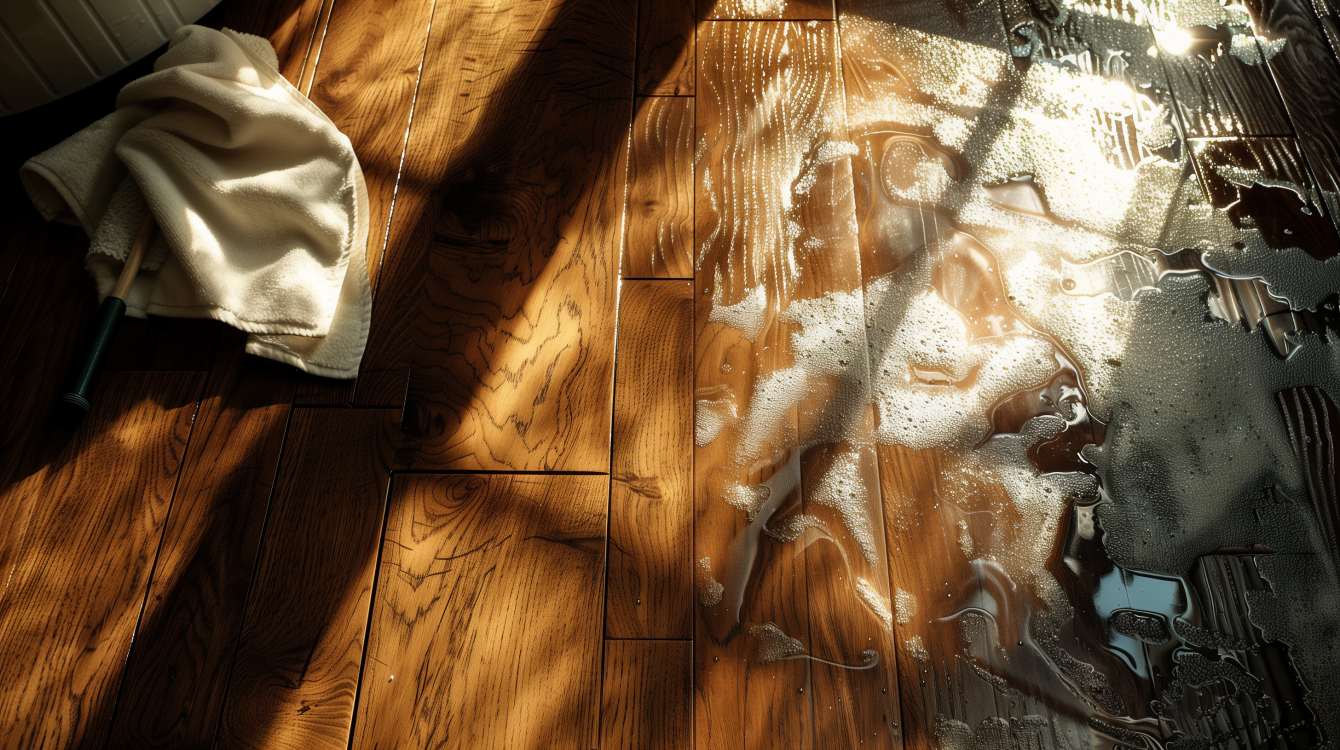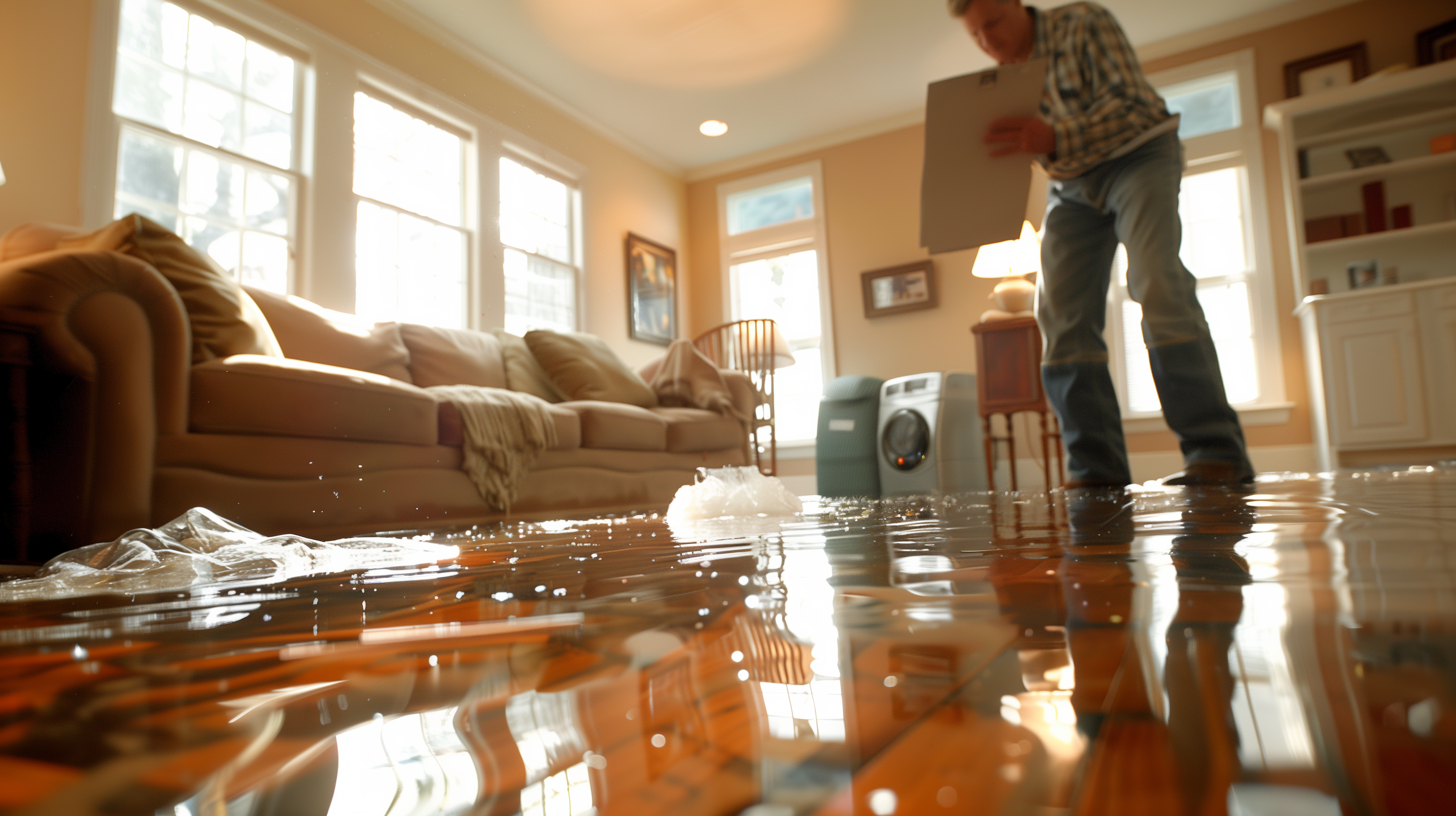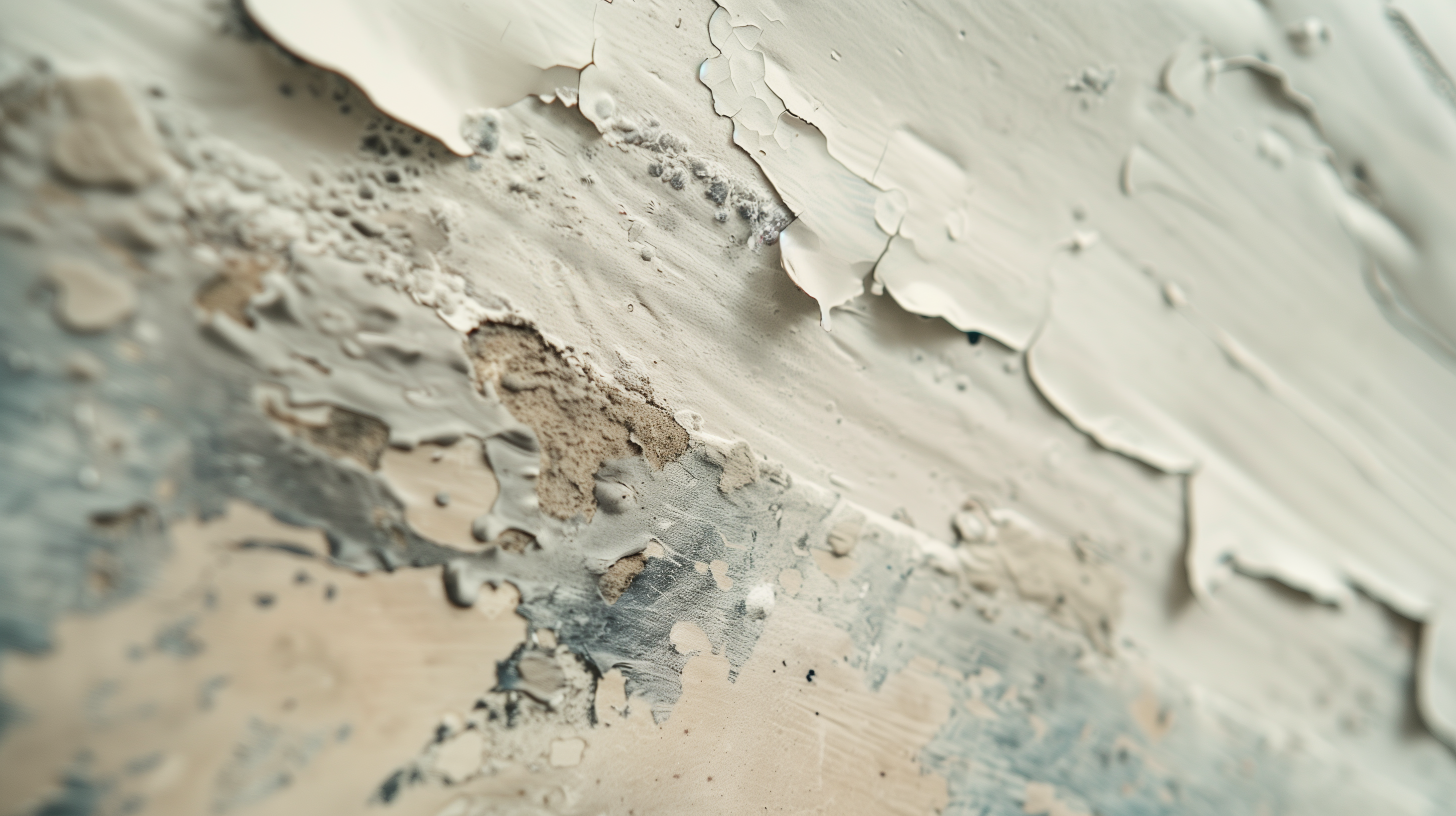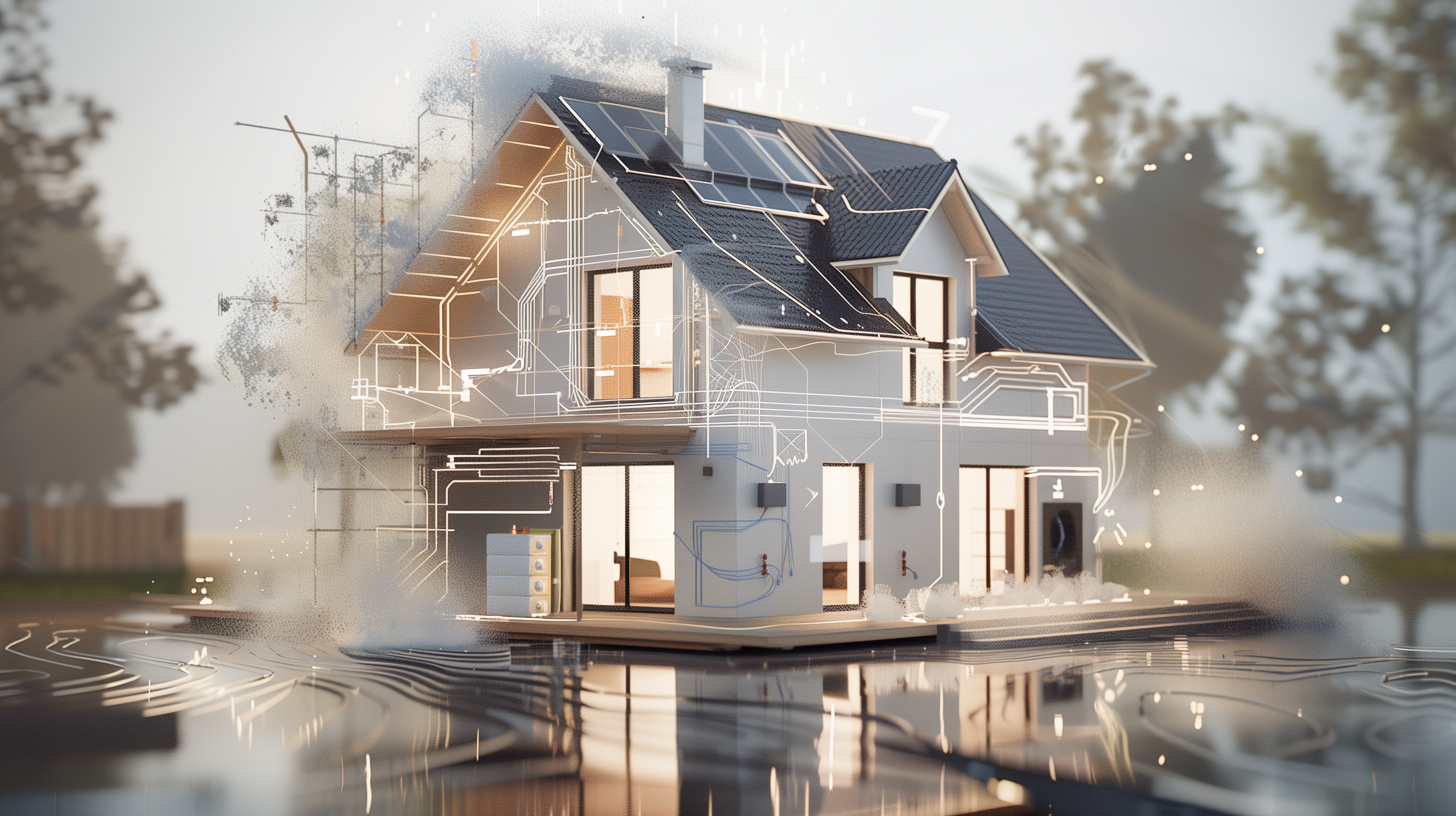What to Do If You Spill Water on Hardwood Floors: Prevention and Repair Tips
Hardwood floors add beauty and value to your home, but they are highly susceptible to water damage. Whether it’s a small spill or a more significant leak, water can penetrate the wood, causing swelling, discoloration, and even long-term damage if left untreated. Acting quickly can save your hardwood floors from permanent damage. In this blog, we’ll explain what to do if you spill water on hardwood floors, how to prevent damage, and steps to repair minor issues.
What Happens When Water Spills on Hardwood Floors?
When water spills on hardwood floors, it seeps into the cracks and spaces between the wood planks. If not addressed quickly, this water can cause several issues, such as:
- Warping or Cupping: The wood may swell or cup as it absorbs moisture, leading to uneven surfaces and gaps between planks.
- Discoloration: Prolonged exposure to water can cause your hardwood to change color, often appearing darker or stained.
- Mold and Mildew Growth: Moisture trapped under the flooring can lead to mold or mildew growth, which can damage the wood and pose health risks.
- Permanent Damage: If water seeps deeply into the wood, it can cause rot and weaken the structure of the floor.
Immediate Steps to Take After Spilling Water on Hardwood Floors
Time is of the essence when dealing with water spills on hardwood floors. Follow these steps immediately to minimize damage:
1. Wipe Up the Water Immediately
The most important thing you can do is wipe up the spilled water as soon as possible. Use a clean, absorbent towel to soak up the water from the surface, making sure to reach between the cracks of the floorboards.
2. Dry the Area Thoroughly
After removing the surface water, dry the area thoroughly using a fan or dehumidifier. Increasing air circulation will help pull moisture from the wood and prevent further damage. Avoid using a hairdryer or heater as excessive heat can cause the wood to crack or dry unevenly.
3. Inspect for Water Seepage
Check for signs that water may have seeped into the floor. Look for any buckling, swelling, or dark spots that indicate the wood is absorbing water. If you notice signs of water damage, take immediate steps to dry the floor more thoroughly.
4. Elevate Rugs and Furniture
If the spill occurred near rugs or furniture, remove or elevate them to allow the area to dry properly. Wet rugs or furniture in contact with the hardwood can trap moisture and worsen the damage.
How to Prevent Water Damage on Hardwood Floors
To protect your hardwood floors from future water spills and damage, follow these preventive measures:
1. Seal Your Hardwood Floors
One of the best ways to prevent water damage is by applying a sealant to your hardwood floors. Sealants create a protective barrier that helps repel water and prevents it from seeping into the wood. Regularly reseal your floors to maintain their protection.
2. Use Area Rugs in High-Traffic Areas
Placing area rugs in areas prone to spills, such as near the kitchen sink or entryways, can prevent water from reaching your hardwood floors. Make sure the rugs have a non-slip backing and are easy to clean in case of a spill.
3. Wipe Up Spills Immediately
The faster you address spills, the less likely water will seep into the wood. Keep towels or absorbent cloths on hand to quickly clean up any accidents or spills.
4. Install a Dehumidifier
If you live in a humid climate, the excess moisture in the air can contribute to water damage on hardwood floors. Installing a dehumidifier can help control humidity levels in your home and prevent warping or swelling.
5. Regular Maintenance
Perform regular maintenance on your hardwood floors, including refinishing and resealing, to ensure they stay in top condition. This not only protects your floors from water damage but also extends their lifespan.
Repairing Water Damage on Hardwood Floors
If your hardwood floors have sustained water damage despite your best efforts, here are some repair options depending on the severity of the damage:
1. Drying Out the Floor
If you notice small amounts of warping or cupping, drying out the affected area with fans, dehumidifiers, or natural airflow may resolve the issue. Allow the floor to dry completely, as some of the cupping may reverse on its own once the moisture is gone.
2. Sanding and Refinishing
For minor water stains or discoloration, sanding the affected area and refinishing the floor can help restore its appearance. After sanding, apply a wood finish or sealant to protect the area from future spills.
3. Replacing Damaged Floorboards
If the water damage is extensive, such as buckling, cracking, or mold growth, you may need to replace the damaged floorboards. Hiring a professional to assess the damage and replace the boards can ensure that the repair is done correctly.
4. Mold and Mildew Remediation
If mold or mildew has developed due to prolonged water exposure, it’s essential to remove it quickly. Mold can be hazardous to your health and may require professional remediation to ensure all affected areas are treated.
Compliance with Building Codes for Hardwood Floor Repairs
In Illinois, including the greater Chicago area, any significant repairs to hardwood floors must comply with local building codes, particularly when it comes to structural changes or mold remediation. The International Residential Code (IRC) outlines specific requirements for flooring installations, ensuring safety and durability. When hiring a contractor for extensive repairs, make sure they are familiar with these codes to avoid any future issues.
Conclusion
Spilling water on hardwood floors doesn’t have to mean disaster. By acting quickly, you can minimize the risk of long-term damage and keep your floors looking beautiful. If water damage occurs, following these prevention and repair tips can save you time, money, and stress. Remember to reseal your hardwood floors regularly and take proactive measures to protect them from future spills.
For immediate assistance with water damage or hardwood floor repair, you may contact us at Allied Emergency Services, INC. We specialize in water damage restoration and can help protect your home’s value by providing expert repair services.
Contact Information:
Phone: 1-800-792-0212
Email: Info@AlliedEmergencyServices.com
Location: Serving Illinois, Wisconsin, and Indiana with a focus on the greater Chicago area.
If you require immediate assistance or have specific questions, our human support is readily available to help you.
Disclaimer: This article is intended for informational purposes only. For professional advice, consult experts in the field.










